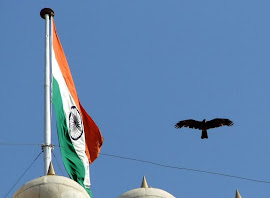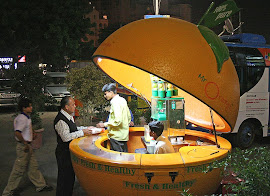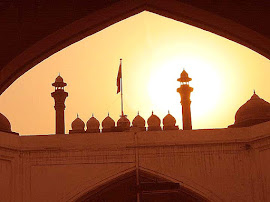Profoundly Indian
IN June 2006, in an essay titled “My Lost World” published in Time magazine, Aravind Adiga wrote about a personal search he made in the Indian city where he grew up. That city was Mangalore, nestled alongside the Western Ghats on the Karnataka coast. Born in Madras (now Chennai) in pre-liberalisation India, Adiga spent his early childhood years in that city before moving with his family to Mangalore, where his father worked as a doctor.
In Mangalore, Adiga first attended Canara High School and then St. Aloysius High School. Despite the loss of his mother to cancer shortly before his secondary school leaving certificate examinations, he reportedly stood first in the State. He knew the importance of education. “When I was growing up,” he wrote in the Time essay, “young men of all religions were united by shared values of hard work, enterprise and a desire to get out of Mangalore as quickly as possible. My brother left when he was 18. I left when I was 16. Many of those who got out never returned. There was no need to go back because the place never seemed to change.”
Adiga left Mangalore in 1991 when his father moved to Australia. Returning to the city 15 years later as a journalist with Time, he found it vastly changed. The population had doubled. Shopping malls and high-rise apartment buildings had reshaped the skyline. There were now five medical colleges, four dental colleges, 14 physiotherapy colleges and 350 schools, colleges and polytechnics.
The new affluence seemed to have come at a price, however, as Adiga wrote: “I met neighbours, relatives and classmates, and each had done well in some way – one had his own house, another a car. But each also had some sorrow we could hardly have imagined. A Catholic friend’s daughter had married a Hindu, and her family no longer spoke to her. A Hindu friend’s daughter had been divorced by her husband. Divorce, extramarital affairs, interreligious marriages, homosexual flings – the doors of experience had swung open in Mangalore. The small city had grown up.”
Looking around the transformed city, he also noticed “a group of drifters and homeless men, some carrying rolled-up mattresses” – part of the underclass who seemed to have been left out of the story of India’s growth. Adiga was curious and troubled by the sight, and during his travels in India as a journalist, he wanted to find out more. The White Tiger, Adiga’s Man Booker Prize-winning debut novel, is the story of this underclass and its life – begging for food, sleeping under concrete flyovers, defecating on the roadsides, shivering in the cold, struggling, in the 21st century, for its freedom. The White Tiger gives this underclass a voice: one that is intelligent, savagely funny and quite unforgettable. It is a voice that seeks out and understands the power of beauty: “If you taught every poor boy how to paint, that would be the end of the rich in India.” But it is also a voice of anger and protest, and it is almost completely unsentimental. “I did my job with near total dishonesty, lack of dedication, and insincerity – and so the tea shop was a profoundly enriching experience.” The novel is structured as a series of letters written to the Chinese Premier by a former car driver from Bihar. Why the Chinese Premier? “Because,” the narrator Balram Halwai, now based in the city of Bangalore, writes, “the future of the world lies with the yellow man and the brown man now that our erstwhile master, the white-skinned man, has wasted himself through buggery, mobile phone usage and drug abuse.”
In Mangalore, Adiga first attended Canara High School and then St. Aloysius High School. Despite the loss of his mother to cancer shortly before his secondary school leaving certificate examinations, he reportedly stood first in the State. He knew the importance of education. “When I was growing up,” he wrote in the Time essay, “young men of all religions were united by shared values of hard work, enterprise and a desire to get out of Mangalore as quickly as possible. My brother left when he was 18. I left when I was 16. Many of those who got out never returned. There was no need to go back because the place never seemed to change.”
Adiga left Mangalore in 1991 when his father moved to Australia. Returning to the city 15 years later as a journalist with Time, he found it vastly changed. The population had doubled. Shopping malls and high-rise apartment buildings had reshaped the skyline. There were now five medical colleges, four dental colleges, 14 physiotherapy colleges and 350 schools, colleges and polytechnics.
The new affluence seemed to have come at a price, however, as Adiga wrote: “I met neighbours, relatives and classmates, and each had done well in some way – one had his own house, another a car. But each also had some sorrow we could hardly have imagined. A Catholic friend’s daughter had married a Hindu, and her family no longer spoke to her. A Hindu friend’s daughter had been divorced by her husband. Divorce, extramarital affairs, interreligious marriages, homosexual flings – the doors of experience had swung open in Mangalore. The small city had grown up.”
Looking around the transformed city, he also noticed “a group of drifters and homeless men, some carrying rolled-up mattresses” – part of the underclass who seemed to have been left out of the story of India’s growth. Adiga was curious and troubled by the sight, and during his travels in India as a journalist, he wanted to find out more. The White Tiger, Adiga’s Man Booker Prize-winning debut novel, is the story of this underclass and its life – begging for food, sleeping under concrete flyovers, defecating on the roadsides, shivering in the cold, struggling, in the 21st century, for its freedom. The White Tiger gives this underclass a voice: one that is intelligent, savagely funny and quite unforgettable. It is a voice that seeks out and understands the power of beauty: “If you taught every poor boy how to paint, that would be the end of the rich in India.” But it is also a voice of anger and protest, and it is almost completely unsentimental. “I did my job with near total dishonesty, lack of dedication, and insincerity – and so the tea shop was a profoundly enriching experience.” The novel is structured as a series of letters written to the Chinese Premier by a former car driver from Bihar. Why the Chinese Premier? “Because,” the narrator Balram Halwai, now based in the city of Bangalore, writes, “the future of the world lies with the yellow man and the brown man now that our erstwhile master, the white-skinned man, has wasted himself through buggery, mobile phone usage and drug abuse.”

.jpg)








.jpg)

0 comments:
Post a Comment